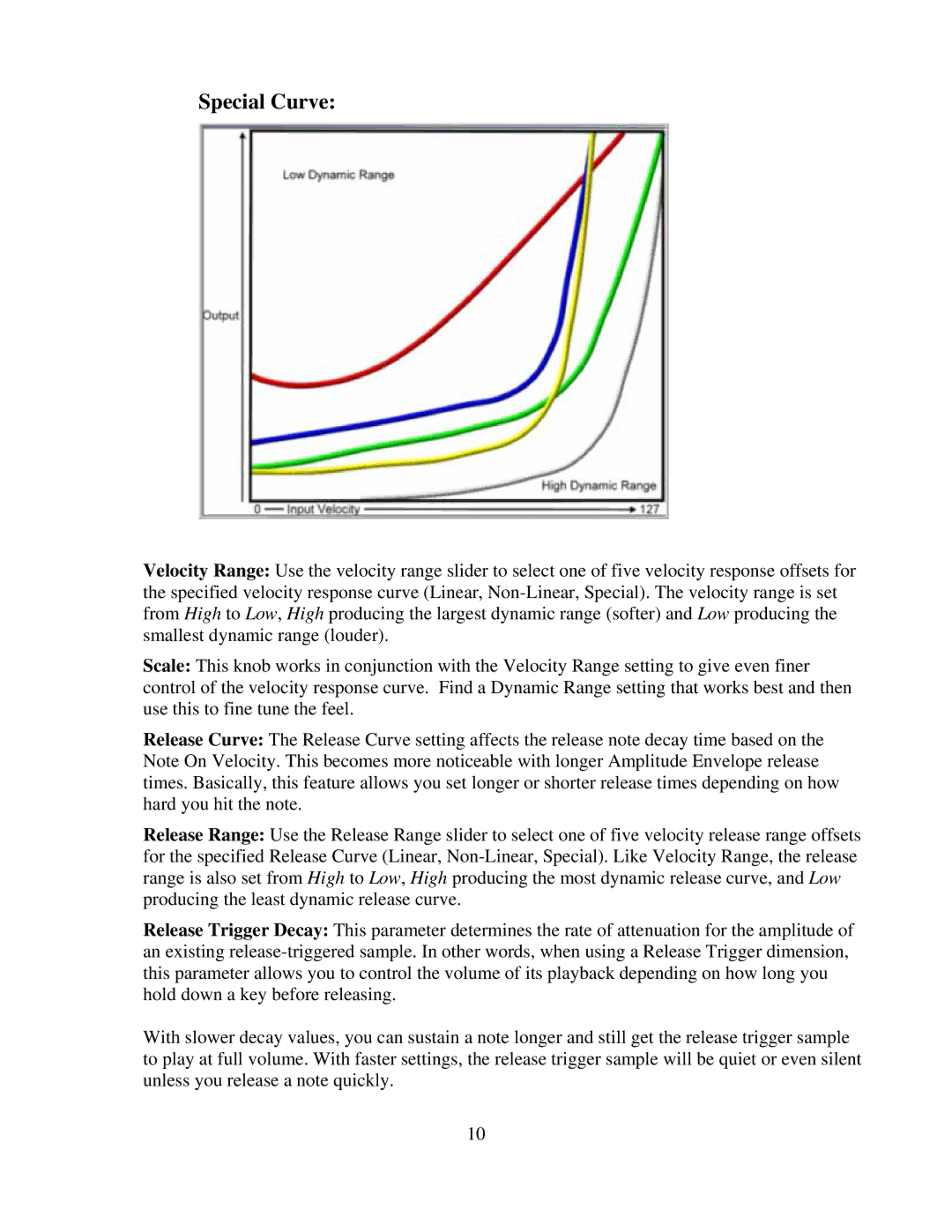
Special Curve:
Velocity Range: Use the velocity range slider to select one of five velocity response offsets for the specified velocity response curve (Linear,
Scale: This knob works in conjunction with the Velocity Range setting to give even finer control of the velocity response curve. Find a Dynamic Range setting that works best and then use this to fine tune the feel.
Release Curve: The Release Curve setting affects the release note decay time based on the Note On Velocity. This becomes more noticeable with longer Amplitude Envelope release times. Basically, this feature allows you set longer or shorter release times depending on how hard you hit the note.
Release Range: Use the Release Range slider to select one of five velocity release range offsets for the specified Release Curve (Linear,
Release Trigger Decay: This parameter determines the rate of attenuation for the amplitude of an existing
With slower decay values, you can sustain a note longer and still get the release trigger sample to play at full volume. With faster settings, the release trigger sample will be quiet or even silent unless you release a note quickly.
10
